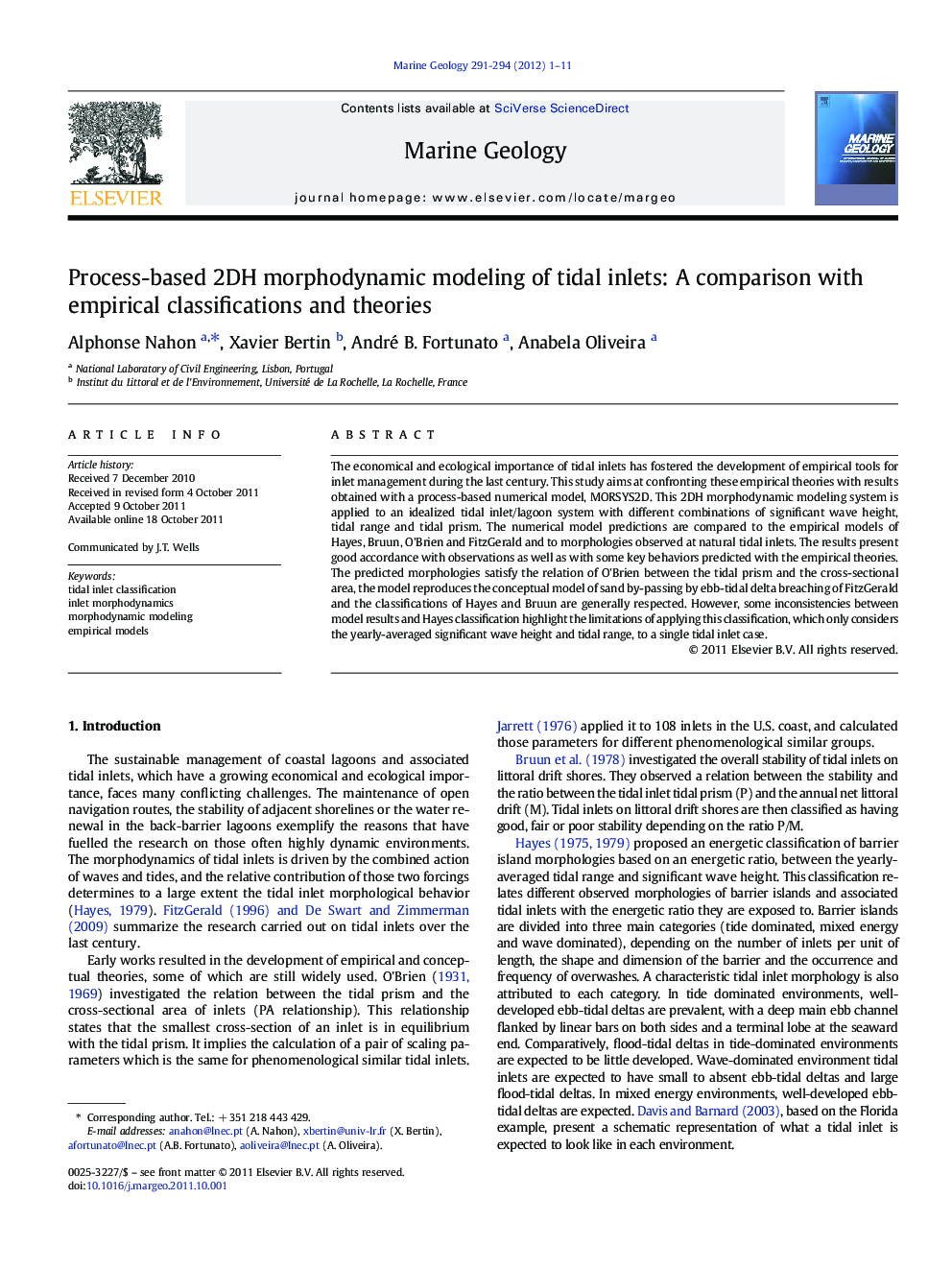| Article ID | Journal | Published Year | Pages | File Type |
|---|---|---|---|---|
| 4718625 | Marine Geology | 2012 | 11 Pages |
The economical and ecological importance of tidal inlets has fostered the development of empirical tools for inlet management during the last century. This study aims at confronting these empirical theories with results obtained with a process-based numerical model, MORSYS2D. This 2DH morphodynamic modeling system is applied to an idealized tidal inlet/lagoon system with different combinations of significant wave height, tidal range and tidal prism. The numerical model predictions are compared to the empirical models of Hayes, Bruun, O'Brien and FitzGerald and to morphologies observed at natural tidal inlets. The results present good accordance with observations as well as with some key behaviors predicted with the empirical theories. The predicted morphologies satisfy the relation of O'Brien between the tidal prism and the cross-sectional area, the model reproduces the conceptual model of sand by-passing by ebb-tidal delta breaching of FitzGerald and the classifications of Hayes and Bruun are generally respected. However, some inconsistencies between model results and Hayes classification highlight the limitations of applying this classification, which only considers the yearly-averaged significant wave height and tidal range, to a single tidal inlet case.
► We simulate the morphodynamic of an idealized tidal inlet for 9 combinations of TR and Hs. ► Morphologies after 3-year simulations present similarities with real morphologies. ► Scaling parameters of the O’Brien law agree with values obtained from observations. ► Results show overall good agreements with Hayes and Bruun classifications.► A short sensitivity analysis motivates the refinement of these classifications.
